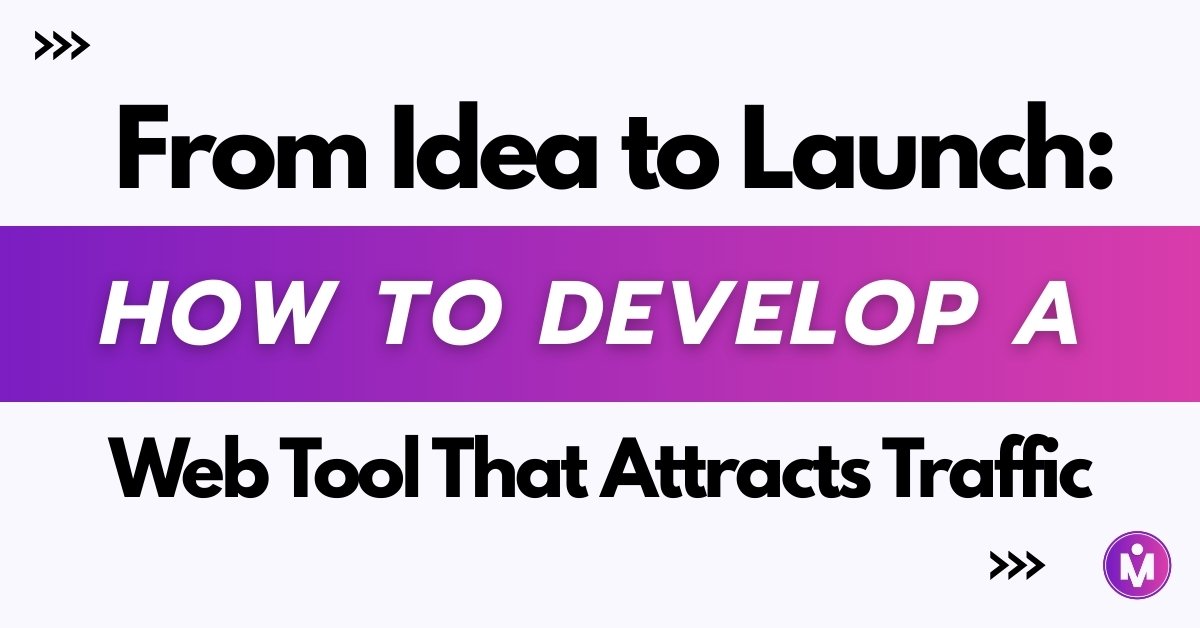Building a web tool is one of the smartest ways to generate consistent online traffic, build brand authority, and create new revenue streams. Whether you dream of a simple calculator or a powerful AI-based service, success requires more than just writing code. This guide walks you through each stage—from idea to launch—so you can develop a web tool that attracts traffic and delivers real value.
1. Start With a Real Problem
Great tools solve everyday problems.
Before writing a single line of code, ask:
- What repetitive tasks frustrate people?
- Which existing solutions are expensive or complicated?
- Can I simplify or speed up an existing process?
💡 Example: MrWebApp’s Anything to PDF Converter helps users turn documents into PDFs instantly—no software installation required.
2. Validate Your Idea
Validation ensures people actually want your tool.
- Keyword Research: Use Google Keyword Planner or Ubersuggest to measure search volume for phrases like “image to text converter” or “free calorie calculator.”
- Competitor Analysis: Identify gaps where current tools are limited or paid.
- Audience Feedback: Post in niche forums or run small surveys to confirm interest.
3. Plan a Minimum Viable Product (MVP)
Start small with only the essential features.
- Core Function: Focus on one primary task (e.g., compress a PDF, resize an image).
- User Flow: Minimize clicks from landing page to result.
- Mobile First: Design for smartphones from day one.
👉 Example: Image to Text Free Online Tool launched with a single key feature before adding enhancements.
4. Choose the Right Technology
Your tech stack depends on complexity:
- Frontend: HTML, CSS, JavaScript (React or Vue if scaling).
- Backend: Node.js, Python, or PHP for heavy processing.
- Hosting: Fast, secure, and SSL-enabled.
For small utilities, even a WordPress + custom HTML widget setup works perfectly.
5. Create a Landing Page That Converts
A high-converting landing page is critical.
Include:
- Clear Headline explaining the tool’s purpose.
- Instant Demo Section so visitors can use it right away.
- Mini Article or FAQ for SEO and user trust.
- Call-to-Action (CTA) encouraging users to bookmark or share.
Check how the PDF Editor Free Online Tool integrates a live tool with supporting content.
6. Optimize for SEO From Day One
Traffic comes from search engines, so make SEO part of your build:
- Place your focus keyword in the title, slug, and first paragraph.
- Add internal links to other tools like PDF to Text Converter and Image Resizer.
- Use structured data/schema for better visibility.
- Ensure fast page speed with compressed assets.
7. Launch and Promote Strategically
When your tool is ready:
- Announce it on social media, niche communities, and LinkedIn.
- Submit to directories such as Product Hunt or BetaList.
- Reach out to bloggers for reviews and backlinks.
- Create a short demo video and upload it to YouTube with a link to your tool.
8. Track, Learn, and Improve
Use analytics to understand user behavior:
- Which features get the most engagement?
- Where do users drop off?
- What feedback do they leave?
Iterate frequently—add new features, improve UI, and fix bottlenecks to keep visitors coming back.
9. Expand Your Ecosystem
One tool is good; an ecosystem is better.
After your first launch, create related tools and interlink them:
- Words Counter Free Tool
- Cam Scanner (coming soon)
- Hashtag Generator, Color Contrast Checker, and more.
Internal linking not only keeps users on your site longer but also boosts SEO across your entire platform.
Final Thoughts
Developing a web tool that attracts traffic is a process of discovery—from spotting a real problem to building a functional product and promoting it effectively. Start small, launch quickly, listen to users, and keep improving. With consistency, your simple idea can become a traffic-generating powerhouse for years to come.
FAQs
What is a web tool and why should I build one? A web tool is a helpful online feature like a calculator that brings traffic, builds trust, and can create income for your site.
How do I find a good idea for a web tool? Look for tasks that annoy people, check if current tools are costly or hard to use, and see if you can make them simpler.
How can I check if people want my tool idea? Use tools like Google Keyword Planner to see search interest, look at competitors, and ask feedback from forums or surveys.
What should my first web tool include? Start with one main feature, keep it easy to use with few clicks, and design it to work well on phones first.
What technology do I need to build a web tool? Use HTML, CSS, and JavaScript for the front, Node.js or PHP for the back, and fast hosting with SSL for security.
How can I make my tool’s landing page attractive? Add a clear headline, a demo to try it, a short article, and a button to bookmark or share it.
How do I get my tool to show up on Google? Put your main keyword in the title and text, link to other tools, use schema, and make the page load fast.
What should I do when my tool is ready? Share it on social media, list it on Product Hunt, ask bloggers for reviews, and make a demo video for YouTube.
How can I make my tool better after launching? Use analytics to see what users like, where they leave, and their feedback, then add features or fix issues.
Can I add more tools to my site later? Yes, create related tools like a Words Counter or Hashtag Generator and link them to keep users on your site longer.



Add a Comment